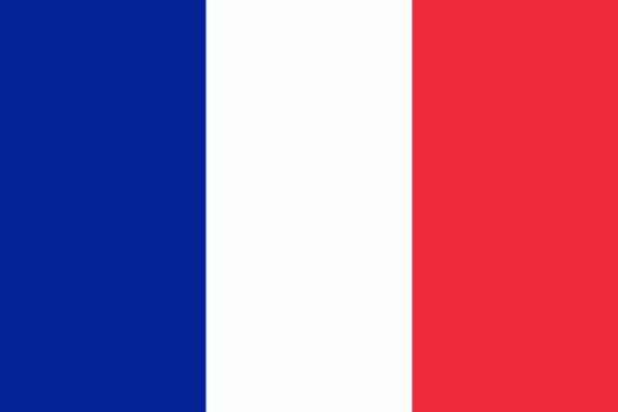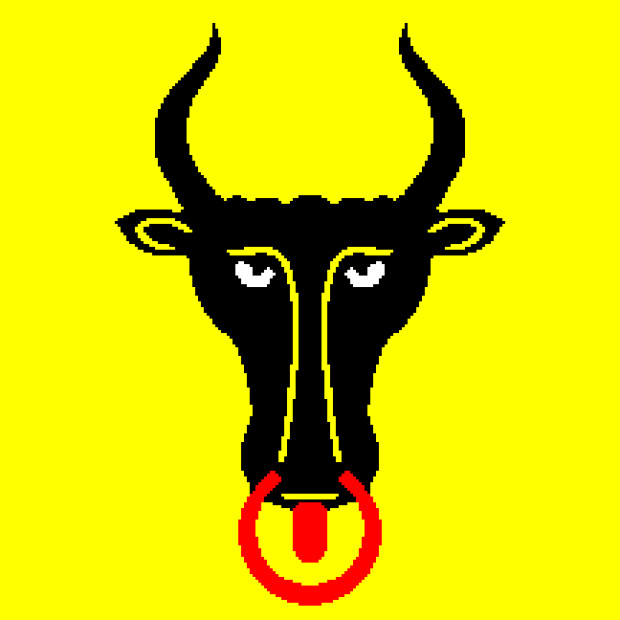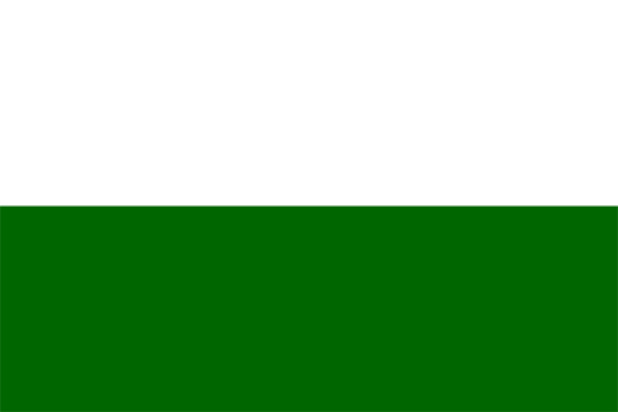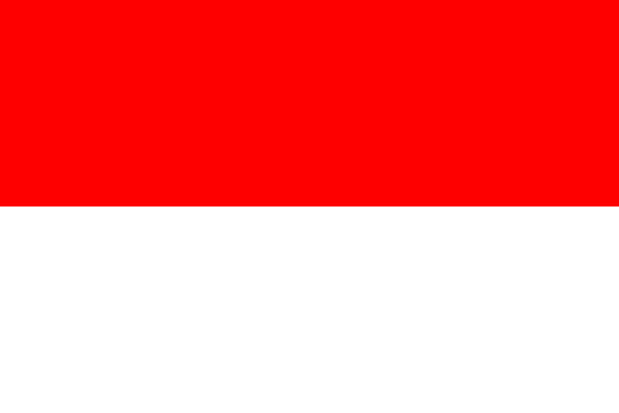Vlag van Filipijnen
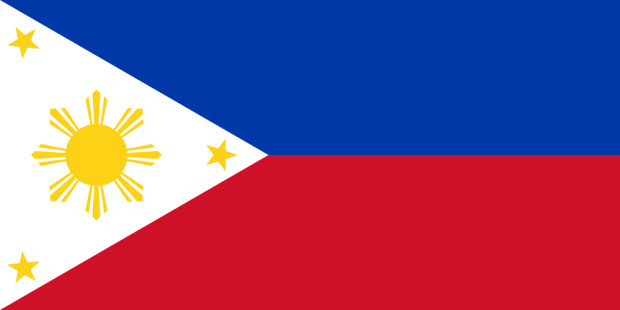
Luister naar het volkslied
Achtergrondkennis
The national flag of the Philippines on 12 Introduced in June 1898, but in the course of time is repeatedly changed in the shade. It was originally designed by Emilio Aguinaldo. The flag of the Philippines shall be flown at peace with the blue box to the top, while in times of war the red field on top.
Structure of the flag
The national flag consists of two horizontal stripes of equal width in the colors of royal blue and scarlet, which are covered by a white equilateral triangle at the leech. The center of the triangle holds a golden sun, which is surrounded by eight principal rays. Each beam consists of three individual rays again. At each corner of the triangle, also a five-pointed gold star is placed. Each star is designed so that one of the prongs on the top right corner shows where it is located.
The sides of the flag have a length to width ratio of 2:1. All three sides of the white triangle correspond in their dimensions each of the width of the flag.
Symbolism
According to official sources, the white triangle stands for equality and fraternity, the blue field for peace, truth and justice, and the red field for patriotism and valor. The eight-rayed sun stands for the freedom and the eight provinces in which erupted in 1896, the Philippine revolution against the Spanish colonial power, (Batangas, Bulacan, Cavite, Laguna, Manila, Nueva Ecija, Pampanga and Tarlac), and for this time martial law was declared. The three stars symbolize the main geographical areas of Luzon, Mindanao and the Visayas island group.
The symbolism of the flag was given in 1898 with the proclamation of Philippine Independence differs, however, from the current official interpretation. Then played the white triangle on the emblem of the Katipunan, the secret organization that rebelled in the underground against the Spanish rule. It is said that the colors of the flag were based. To the flag of the United States as an expression of gratitude for U.S. support in the fight against the Spaniards during the Philippine Revolution According to another interpretation is one of the three stars stand alone for the island of Panay and do not represent the entire Visayas.
Current Design
The current design of the Philippine national flag was designed by Emilio Aguinaldo, a general of the Philippine Revolution, when this in late 1897, in exile in Hong Kong. The first flag was sewn by Doña Marcela Marino de Agoncillo, which she made with the help of her daughter Lorenza and with the support of Doña Delfina Herbosa de Natividad, a niece of the Reformation leader Jose Rizal.
The flag was, however, only during the declaration of Philippine independence on 12 June 1898 in Kawit for the first time formally unfolds. According to an article in The Manila Times by Augusto de Viana, a respected historian of the National History Institute, can be found in historical textbooks and commemorative rites mentions showing that the flag on the 28th for the first time May was raised in 1898 at the Battle of Alapan, a district of Imus, Cavite. This is also cited in the Presidential Proclamation No. 374, on the 6th of President Diosdado Macapagal March was published 1965th The article goes on to say that the historical records indicate, the flag was first used in Cavite City, when General Aguinaldo unrolled during the first battles in the Spanish-American War.
Twee gelijke horizontale strepen (blauw, rood); gelijkzijdige witte driehoek aan de zijkant van de vlaggenmast; in het midden een gele zon met acht stralen, waarbij elke straal drie kleinere stralen heeft, en drie kleinere gele vijfpuntige sterren in de hoeken van de driehoek.
Betekenis
De witte driehoek symboliseert vrede en zuiverheid. De acht zonnestralen symboliseren de acht provincies van de Filippijnen, die in opstand kwamen tegen de Spaanse kolonialisten. De drie sterren staan voor de drie gebieden Luzon, Mindanao en Visayas. De blauwe band symboliseert patriottisme. De rode band van de vlag symboliseert de moed van het volk. Als het land in oorlog is, wordt de rode band omhoog bewogen als symbool van moed en dapperheid.
Anthem
Dat is wat ChatGPT weet over de vlag van Filipijnen
-
De nationale vlag van de Filippijnen, ook bekend als de "Lupang Hinirang", symboliseert de onafhankelijkheid van het land. Hij bestaat uit drie horizontale strepen in blauw, rood en geel, die de kleuren van de oude Filipijnse vlag vertegenwoordigen. De witte ster in het midden vertegenwoordigt de provincies van het land en de drie sterren eronder symboliseren de drie grote eilanden Luzon, Visayas en Mindanao.
-
De nationale vlag van de Filippijnen werd in 1898 geïntroduceerd tijdens de Filippijnse Onafhankelijkheidsoorlog. Hij bestaat uit drie gelijkmatig verdeelde strepen in blauw, rood en geel en een witte driehoek met een achtpuntige ster in het midden. De blauwe streep symboliseert vrijheid, de rode streep moed en de gele streep welvaart. De achtpuntige ster staat voor de acht regio's van de Filipijnen.
-
De nationale vlag van de Filipijnen is een kleurrijke horizontale streep van drie gelijke horizontale strepen. De bovenste streep is blauw, de middelste wit en de onderste rood. In het midden van de vlag staat een achtpuntige witte ster omringd door drie vijfpuntige gouden sterren. De blauwe streep staat voor vrijheid, de witte voor zuiverheid en de rode voor moed en dapperheid. De witte achtpuntige ster symboliseert de acht provincies die zich in 1892 verenigden in een revolutie tegen de Spaanse koloniale overheersing.
Iets nieuws ontdekken
Willekeurige vlaggen uit onze grote vlaggendatabase. Laat ons je verrassen.



